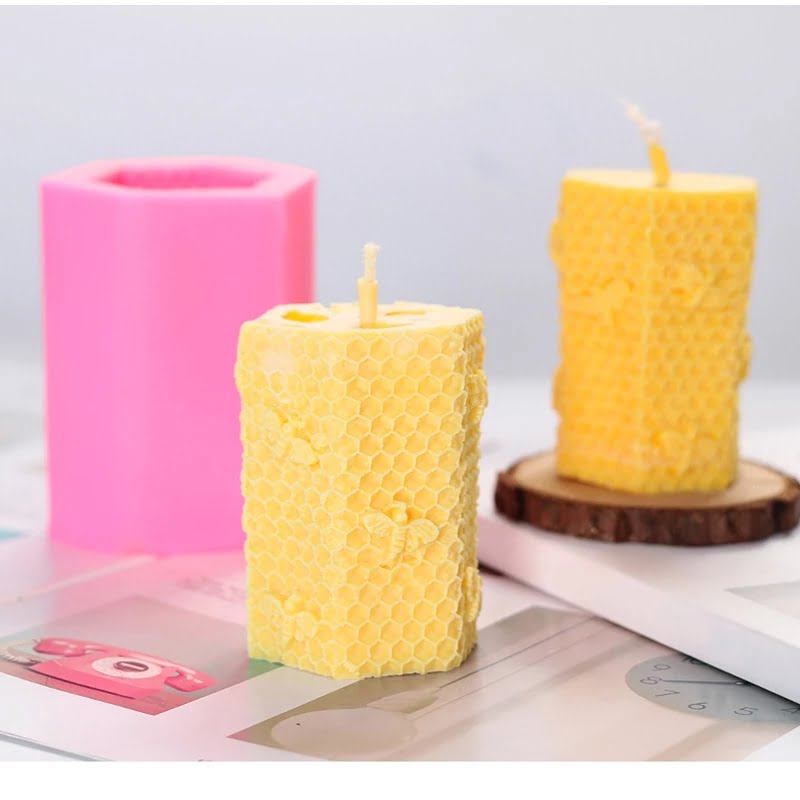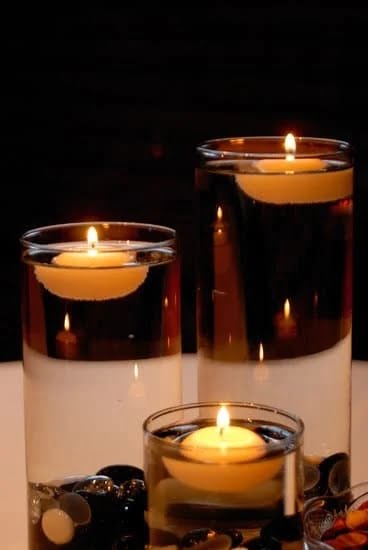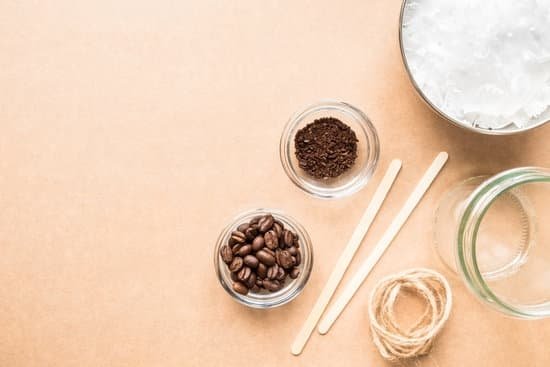In the world of candle making, essential oils play a vital role in achieving the desired scent and ambiance. But when it comes to using these potent oils, one question often arises: do I need to dilute them? In this article, we will explore the importance of diluting essential oils in candle making and why it is crucial for both safety and fragrance effectiveness.
Candle making is an art that combines science and creativity. And at the heart of creating beautiful candles lies the use of essential oils. These oils are highly concentrated extracts from various plants and flowers, known for their aromatic properties. They add depth, character, and allure to any candle, transforming it from a mere wax structure into a sensory experience.
Understanding the science behind essential oils is crucial in comprehending the need for dilution. These natural compounds possess high concentrations of volatile organic compounds that give them their unique scent profiles. However, this concentration also means that they can be too powerful or even potentially dangerous if used without proper dilution. By delving into the chemistry and potency of essential oils, we can gain insight into why they must be diluted in candle making.
As we embark on this journey through the world of essential oils and candle making, we will not only explore the importance of dilution but also delve into the potential risks associated with using undiluted essential oils. We will uncover best practices for diluting these oils effectively while maximizing fragrance intensity. Furthermore, we will discover how diluted essential oils offer numerous benefits beyond just scenting a space.
Through expert advice and tips and tricks from experienced candle makers, you will gain insight into measuring and diluting essential oils for safer yet more fragrant candles. Join us as we strive to strike the perfect balance between enhancing our candles’ aromas while ensuring their safety and longevity.
The Science Behind Essential Oils
When it comes to candle making, essential oils play a crucial role in providing fragrance and enhancing the overall experience. However, it is important to understand the science behind essential oils in order to use them effectively and safely.
Essential oils are highly concentrated extracts from plants that contain aromatic compounds. These compounds are responsible for the unique scent of each oil. The concentration and potency of essential oils can vary depending on factors such as the plant species, extraction method, and quality of the oil.
The concentration of essential oils is typically measured in percentage or parts per million (ppm). For example, a 100% concentration means undiluted oil, while a 1% concentration means one part essential oil diluted with 99 parts carrier oil or another diluent. It’s important to note that using undiluted essential oils in candle making can be risky due to their high concentration.
To better understand the potency of essential oils, it is important to consider their chemical composition. Essential oils are composed of various volatile organic compounds (VOCs) such as terpenes, aldehydes, esters, and more. These VOCs contribute to not only the aroma but also potential therapeutic properties of the oil.
By diluting essential oils properly in candle making, you can achieve a balance between fragrance strength and safety. Dilution helps spread out the concentrated molecules in the oil and reduces the risk of skin irritation or allergic reactions when coming into contact with the candles or diffusers. It also allows for more controlled dispersion of fragrance throughout the room when burning the candles.
In summary, understanding the concentration and potency of essential oils is crucial for safe and effective use in candle making. Diluting these potent substances helps reduce risks while still allowing for a pleasant fragrance experience. By following proper dilution techniques and considering factors such as fragrance intensity, you can create candles that are both safe and fragrant.
The Importance of Dilution
Essential oils play a crucial role in candle making, adding fragrance and therapeutic benefits to the final product. However, it is important to understand that essential oils are highly concentrated substances that need to be diluted before they are used in candle making. This section will delve into the reasons why diluting essential oils in candle making is vital.
One of the main reasons for diluting essential oils is their concentration and potency. Essential oils are extracted from plants using various methods, resulting in highly concentrated aromatic compounds. Undiluted essential oils can be too strong and overpowering when used in candles, leading to an unpleasant sensory experience for the user. Dilution helps to soften the fragrance and ensures that it is balanced with other scent notes in the candle.
Moreover, diluting essential oils in candle making is crucial for safety purposes. Undiluted essential oils can pose potential risks such as skin irritation, respiratory issues, or even fire hazards. Dilution not only mitigates these risks but also allows for better integration of the oil into the wax during the burning process. This ensures a safer and more consistent release of fragrance throughout the entire lifespan of the candle.
To achieve proper dilution, there are several techniques that can be employed in candle making. One popular method involves creating a master blend by mixing a specific amount of essential oil with a carrier oil or wax prior to adding it to the main batch. Another technique involves determining the appropriate number of drops per ounce of wax or using a percentage-based dilution ratio.
In summary, diluting essential oils in candle making is vital due to their concentration and potency, as well as for safety reasons. By carefully diluting essential oils, candle makers can create candles that offer pleasant fragrances while minimizing potential risks associated with undiluted oils. In the next section, we will explore best practices and expert advice for diluting essential oils effectively in candle making.
Safety First
Undiluted essential oils may seem appealing for creating highly fragrant candles, but it is important to prioritize safety when using these potent substances in candle making. The concentrated nature of undiluted essential oils can pose various risks that should not be overlooked.
One potential risk of using undiluted essential oils in candles is skin irritation or allergic reactions. Essential oils are highly concentrated extracts from plants, and they can be too strong for direct contact with the skin. When used undiluted, they have the potential to cause skin irritation or even more severe allergic reactions in some individuals.
Another risk to consider is the potential for fire hazards. Essential oils are flammable substances, and using them at full strength in candles increases the risk of fire accidents. Undiluted essential oils have a higher concentration of volatile compounds, which can lead to increased flame size and intensity. This not only poses a fire hazard while the candle is burning but also increases the risk of accidental ignition if not handled properly.
Additionally, undiluted essential oils can emit overpowering scents that may cause headaches or respiratory issues for some individuals. When used at full strength, certain essential oils can release strong aromas that may be overwhelming or irritating to sensitive noses or airways. By diluting them properly in candle making, you can achieve a balanced fragrance level that enhances relaxation and enjoyment without causing discomfort.
To mitigate these potential risks, it is crucial to dilute essential oils before incorporating them into candles. Dilution helps create a safer and more well-rounded scent profile while minimizing any adverse effects on your health or home environment.
In order to ensure safety while making scented candles, it is best to follow established dilution techniques and best practices. These include measuring essential oil quantities accurately and selecting appropriate carrier mediums such as vegetable oil or liquid wax blends for dilution purposes. Diluting essential oils allows for better control over fragrance intensity while reducing the potential risks associated with using undiluted oils.
Ultimately, the importance of safety cannot be overstated when it comes to using essential oils in candle making. By prioritizing dilution and following proper techniques, you can enjoy the benefits of these fragrant substances while minimizing any potential risks to your health and safety.
Dilution Techniques
To ensure the safe and effective use of essential oils in candle making, proper dilution techniques must be followed. Diluting essential oils not only helps to mitigate potential risks but also ensures that the fragrance is balanced and pleasant. Here are some best practices for diluting essential oils in candle making:
- Determine the ideal concentration: Before starting the dilution process, it is important to consider the desired fragrance intensity and the specific essential oil being used. Some oils may have stronger scents than others, so determining the ideal concentration will help achieve the desired fragrance strength.
- Use a carrier oil: Carrier oils such as coconut oil, almond oil, or soybean oil are commonly used to dilute essential oils. These oils help disperse the fragrance evenly throughout the candle wax and reduce the risk of irritation from strong undiluted essential oils.
- Follow proper measurement ratios: To achieve a balanced fragrance, it is important to follow recommended measurement ratios when diluting essential oils. The general guideline is to use 10-20 drops of essential oil per ounce of carrier oil or wax. However, this ratio can vary depending on personal preference and the specific scent being used.
| Dilution Technique | Measurement Ratio |
|---|---|
| Light Dilution | 10 drops of essential oil per ounce of carrier oil or wax |
| Moderate Dilution | 15 drops of essential oil per ounce of carrier oil or wax |
| Strong Dilution | 20 drops of essential oil per ounce of carrier oil or wax |
By following these best practices for diluting essential oils in candle making, you can create candles that are both safe to use and pleasing to the senses. Dilution not only helps prevent potential irritation or adverse reactions but also allows for better control over the intensity of the fragrance.
Considerations for Fragrance Intensity
When it comes to making scented candles, one of the key considerations is the desired fragrance intensity. This refers to how strong or subtle you want the scent of your candle to be when it is burned. The level of fragrance intensity can greatly affect the overall experience and enjoyment of the candle, so it is important to understand how dilution affects scent strength.
Understanding Dilution
Dilution is the process of reducing the concentration or potency of essential oils by adding a carrier oil or another suitable medium. In candle making, dilution is often necessary to achieve a balanced and pleasant fragrance intensity. If essential oils are used undiluted, they can be overpowering and may even cause irritation or allergic reactions for some individuals.
Dilution Ratios
The ratio at which essential oils should be diluted largely depends on personal preference and the specific type of oil being used. As a general guideline, diluting essential oils at a 2-5% concentration is recommended for candle making. This means that for every 1 ounce (30 ml) of carrier oil or wax, you would add 6-15 drops of essential oil. Keep in mind that certain oils may require even lower dilutions due to their strong potency.
Testing and Adjusting
Finding the ideal fragrance intensity for your candles may involve some trial and error. It is best to start with a lower dilution ratio and gradually increase if desired until you achieve the desired strength. It’s also recommended to test different dilutions before making larger batches of candles.
By considering fragrance intensity during the dilution process, you have more control over how your candles smell when burned. This allows you to create personalized experiences based on individual preferences and ensures that your candles provide an enjoyable aromatic experience without overwhelming those who come into contact with them.
Maximizing Benefits
Diluting essential oils in candle making not only enhances safety but also maximizes the benefits that these oils can provide. By diluting essential oils, you can ensure a more controlled and balanced fragrance, as well as improve the overall performance of your candles. This section will explore the various benefits of using diluted essential oils in candle making.
Consistency and Control
One of the key benefits of diluting essential oils in candle making is achieving consistency and control over the fragrance. Undiluted essential oils can be extremely potent and may overpower the scent balance in your candles. By diluting them, you can control the intensity of the fragrance, allowing for a more pleasant and balanced aroma. This is especially important when working with certain essential oils that have stronger scents than others.
Increased Safety
Safety should always be a top priority when working with essential oils in candle making. Undiluted essential oils have concentrated chemical compounds that can potentially irritate or sensitized the skin, eyes, and respiratory system. Dilution helps reduce the risk of adverse reactions, ensuring a safer environment for both yourself and those who use your candles.
Extended Shelf Life
Diluting essential oils can also help extend their shelf life. Essential oils are highly volatile substances that can evaporate quickly if left undiluted or exposed to heat or sunlight for prolonged periods. By diluting them, you reduce their volatility and increase their lifespan, allowing you to enjoy your fragrant candles for longer periods without worrying about losing their scent potency.
In summary, diluting essential oils in candle making allows for consistency and control over fragrance intensity while also enhancing safety by reducing potential risks. Additionally, dilution extends the shelf life of essential oils, ensuring long-lasting scent potency in your candles. The next section will provide expert advice on measuring and diluting essentials oils properly for optimum results in candle making.
Tips and Tricks
In candle making, the proper measurement and dilution of essential oils are crucial steps to creating a safe and fragrant product. To ensure success in this process, it is important to follow expert advice and utilize some useful tips and tricks.
Firstly, when it comes to measuring essential oils for candle making, accuracy is key. Using an accurate scale or measuring tools can help ensure that the right amount of oil is added to your candle. It is recommended to measure essential oils by weight rather than volume since different oils have varying densities. This will result in a more consistent fragrance throughout your candles.
Another tip for measuring essential oils is to start with smaller quantities and gradually increase as needed. This approach allows you to carefully control the scent strength without overpowering your candle. Additionally, it allows you to experiment with different fragrance combinations and ratios until you achieve the desired scent profile.
When it comes to diluting essential oils in candle making, carriers play an important role. Carrier oils such as coconut oil or soybean oil can be used to dilute concentrated essential oils effectively. These carriers not only help evenly distribute the fragrance but also help prolong the burning time of your candles. It is generally recommended to use a carrier oil at a ratio of 3-10% depending on the potency of the essential oil being used.
Overall, proper measuring and dilution techniques are essential for successful candle making using essential oils. Following expert advice and utilizing these tips and tricks will not only result in safer candles but also enhance the fragrance experience for yourself and others. Experimenting with different methods can help you find the perfect balance between safety, fragrance intensity, and overall quality of your candles.
Conclusion
In conclusion, it is crucial to strike the perfect balance when it comes to diluting essential oils in candle making. While essential oils add fragrance and therapeutic benefits to candles, they are highly concentrated and potent substances that can pose risks if used undiluted. Diluting essential oils not only ensures the safety of both the maker and the user but also allows for a more pleasant and well-rounded scent experience.
It is important to understand the science behind essential oils and their concentration levels. Essential oils are extracted from plants through various methods such as steam distillation or cold pressing, resulting in highly concentrated forms of plant essence. These concentrated oils contain powerful compounds that have incredible aroma and therapeutic properties.
However, using undiluted essential oils can lead to skin irritations, allergic reactions, or even adverse effects on respiratory health. By diluting these potent oils, you decrease their intensity while still enjoying their many benefits.
When it comes to dilution techniques, there are several best practices to follow in candle making. One common method is using a carrier oil or wax to dilute essential oils before adding them to the candle wax. This ensures even distribution of the fragrance throughout the candle while preventing any potential negative effects from undiluted oils. Additionally, measuring and documenting the amount of essential oil used during the dilution process is crucial for consistency and replicability in future batches.
Diluting essential oils not only promotes safety but also enhances fragrance intensity in candles. The carefully balanced ratio of diluted oil allows for a more well-rounded scent profile rather than an overpowering or one-note aroma. Experimenting with different dilution ratios can help achieve desired scent strength without compromising on safety or overpowering other fragrances present in the candle.
Frequently Asked Questions
How do you mix essential oils for candles?
Mixing essential oils for candles involves careful consideration of fragrance combinations, intensity, and personal preferences. To begin, gather the desired essential oils for your candle blend. It is important to select high-quality oils that are specifically formulated for candle making, ensuring they are safe for use with open flames. Start by deciding on the fragrance blend you wish to create and identify the primary notes you want to highlight.
Using a small container or beaker, combine different essential oils drop by drop to test their scent compatibility and overall aroma profile. Adjust the ratio of each oil until you achieve the desired balance and proportionality of fragrances. Remember to record the exact measurements of each oil used so that you can replicate or adjust your blend in future batches.
How many drops of essential oil to use when making candles?
The number of drops of essential oil required when making candles will depend on several factors, including the size and capacity of your candle container, preferred fragrance intensity, and specific fragrance notes involved in your blend. Generally, it is recommended to use between 1-2% essential oil per weight of wax.
For example, if you are using 500 grams (17.6 ounces) of wax, this would correspond to approximately 5-10 grams (0.18-0.35 ounces) or 100-200 drops of essential oil. However, it is crucial to consult individual fragrance guidelines provided by reputable suppliers as some oils may have usage restrictions due to intensity or potential skin sensitivity issues.
What is the ratio of essential oils to candle wax?
Determining the ratio of essential oils to candle wax requires considering personal preference for fragrance strength as well as any manufacturer guidelines provided by your chosen wax supplier. A commonly recommended ratio for blending essential oils with candle wax is between 6-10% total fragrance load per weight of wax used. This means that if you are working with 500 grams (17.6 ounces) of wax, you would typically incorporate around 30-50 grams (1-1.7 ounces) of essential oils.
However, it is crucial to note that specific wax types can tolerate different fragrance loads and some may require lesser concentrations. Always consult the guidelines provided by your wax supplier and conduct small test batches to determine the optimal ratio that fulfills both fragrance preferences and safety considerations.

Welcome to my candle making blog! In this blog, I will be sharing my tips and tricks for making candles. I will also be sharing some of my favorite recipes.





